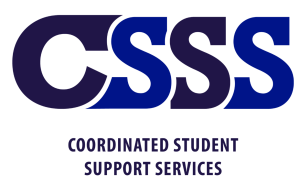The calcium connection

The calcium connection
All nutrients are important for good health at any age, but some have special importance for older adults. For example, inadequate calcium has been linked to osteoporosis, a condition in which bones become weak and brittle. The exact cause of osteoporosis is not known. Several nutrients in addition to calcium are involved.
Some scientists believe that women need to get adequate amounts of calcium throughout life. Milk, yogurt, cheese and other dairy products are the best sources of calcium. Some dark-green leafy vegetables, canned fish eaten with the bones (sardines and salmon) and tofu also provide calcium.
To absorb calcium, your body needs vitamin D. Vitamin D is added to most fluid milk. It can also be made by your skin when exposed to sunlight. Dietary supplements of vitamin D are usually not necessary. Your doctor should advise you on your need for additional vitamin D. If your doctor recommends supplements, she should tell you how much you should take.
In addition to getting adequate calcium and vitamin D it is important to note that moderate exercise that places weight on your bones, such as walking, helps maintain and may even increase bone density and strength in older adults.
Who is at risk for osteoporosis?
Anyone can get osteoporosis, but women are at greatest risk, especially white women who are thin, fair-skinned and small in build. Aging itself, extreme immobility and genetics, as well as smoking and drinking alcoholic beverages, are believed to contribute to the risk for osteoporosis.
Loss of calcium from the bones increases in women after menopause, when levels of the hormone estrogen decrease. Estrogen replacement therapy can be prescribed by a doctor to help decrease bone loss after menopause. Because estrogens may have negative side effects in some women, the decision to take estrogen should be made by each woman with the help of her doctor.
Milk is the most obvious and popular source of both calcium and vitamin D, but some people don’t drink it and need to consider other ways to get calcium.
Some people have trouble digesting lactose, the sugar occurring naturally in milk.
If you have trouble digesting milk:
-
Drink milk that has had lactase added or add it yourself. Lactase is an enzyme that breaks down milk sugar. It can be purchased at many drugstores.
-
Drink only a small amount of milk at a time.
-
Eat yogurt or cheese. Lactose has been partially broken down in these foods.
-
Try cooked foods made with milk such as soups, puddings or custards.
If you don’t like milk, eat more of other foods with calcium, such as: -
foods made with milk or cheese
-
tofu, a soy product that is sometimes made with calcium sulfate (check the label); 1/2 cup (four ounces) of tofu made with calcium sulfate has about the same amount of calcium, protein and fat as one cup of whole milk.
-
dark-green leafy vegetable, such as kale, collards and broccoli
-
tortillas made with cornmeal that is fortified with calcium; the label may state that the cornmeal is processed with lime, or may list the cornmeal as “masa harina”
-
canned or dried fish with edible bones, such as salmon and sardines.
Source: Food Facts for Older Adults , U.S. Department of Agriculture





